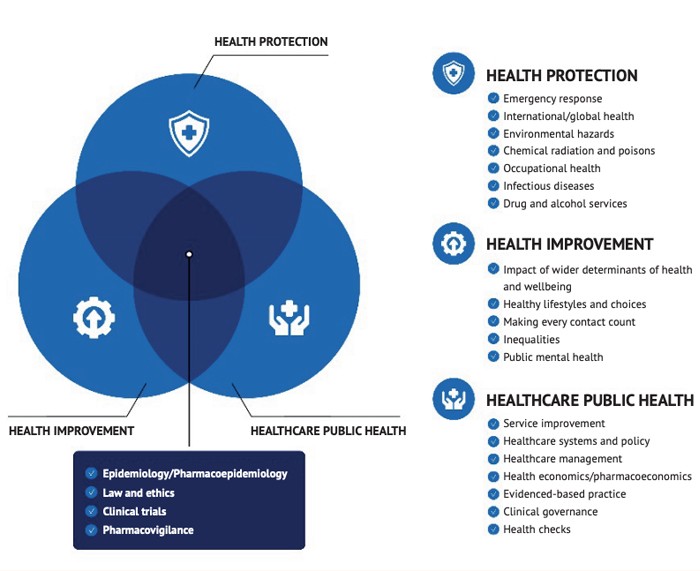Introduction & module overview
Across the UK, there are more than 1.6 million visits to a community pharmacy every day, providing significant opportunities to make every contact count for the health of individuals as well as the health of the local populations these pharmacies serve.
All four UK nations have national policies on public/population health including:
- The NHS Long Term Plan (England) (2019)
- Public Health Priorities for Scotland (2018)
- Making Life Better – a Whole System Framework for Public Health (2013-23) and Health and Wellbeing 2026: Delivering Together (Northern Ireland)
- A Healthier Wales: Long Term Plan for Health and Social Care (Wales).
Pharmacy professionals need a good understanding of the needs and challenges facing their local populations and the important contributions they can make to help address health inequalities.
A recent comprehensive evidence review of pharmaceutical public health in the UK highlighted that national programmes should continue to embed services within community pharmacies to tackle local health inequalities.
The review also identified the need to improve pharmacy professionals’ training in public health and the importance of addressing variation in the commissioning and delivery of public health services through community pharmacy.
Success requires strong connections between government structures for public health, NHS systems for commissioning/contracting, and effective implementation of new initiatives.
Structures in public health
Each of the four UK nations has its own structures for delivering public health (see table on p27). Actions to improve public and population health need to be taken at three levels:
- National (e.g. public health institute; ministry of health)
- Regional (e.g. integrated care systems/health boards)
- Local (e.g. individual cities, towns and neighbourhoods; PCNs or equivalents).
There are three domains of public health:
- Health improvement including people’s lifestyles as well as addressing inequalities in health and the wider social influences of health
- Health protection including infectious/communicable diseases, environmental hazards, chemical, radiation and nuclear threats; occupational health; emergency preparedness
- Health service delivery and quality (healthcare public health) including service planning, efficiency, audit and evaluation.
These three domains all relate to each other. Pharmacy has a role to play across each of the three domains.

Reflection exercise
Access the latest Pharmaceutical Needs Assessment or equivalent where you provide pharmacy services.
- What local services are currently commissioned from community pharmacies?
- How can you and your pharmacy team contribute if you’re not already?
Sponsored
 Sponsored education
Sponsored education
The role of nasal cleansing in protecting against colds and flu
Learning for the pharmacy team
 Sponsored education
Sponsored education
7 steps to managing sore throat
Get to grips with what customers want from their sore throat treatment and upgrade your consultations with this 7-step guide
